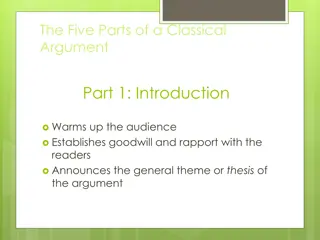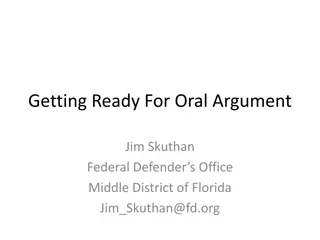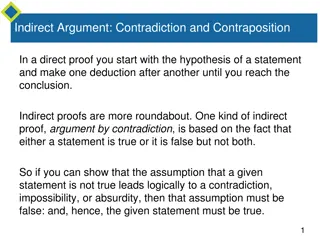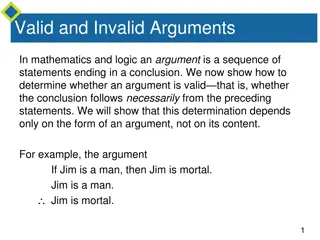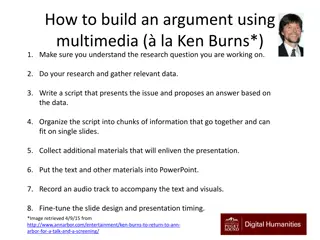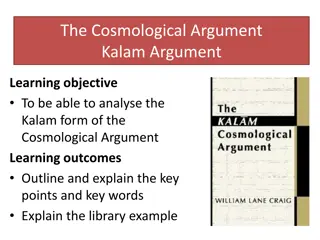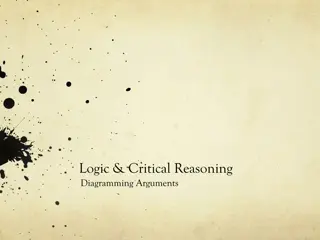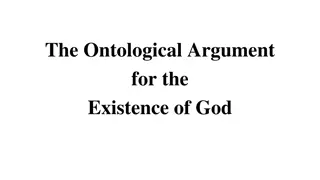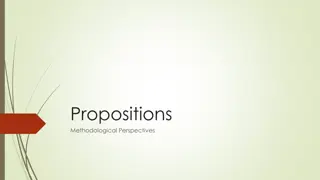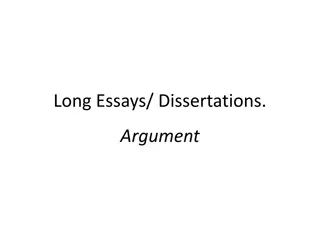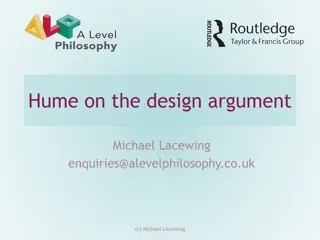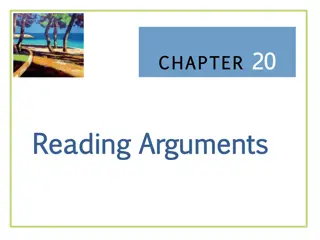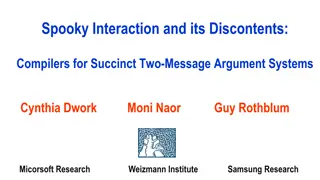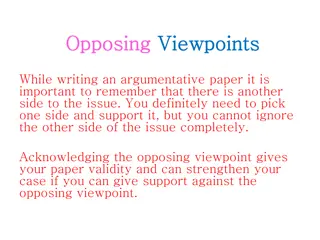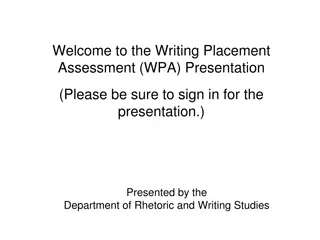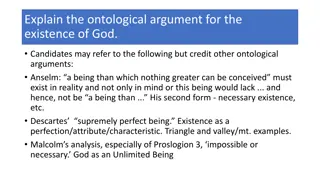Understanding the Key Elements of an Argument
An argument is an intellectual process that involves a series of connected statements to establish the validity of a proposition. This process typically includes elements such as a hook, claim, support with reasons and evidence, and counterclaims with concessions and refutations. Each element plays a crucial role in constructing a strong and effective argument.
Download Presentation

Please find below an Image/Link to download the presentation.
The content on the website is provided AS IS for your information and personal use only. It may not be sold, licensed, or shared on other websites without obtaining consent from the author. Download presentation by click this link. If you encounter any issues during the download, it is possible that the publisher has removed the file from their server.
E N D
Presentation Transcript
Argument: AN INTELLECTUAL PROCESS An argument is a connected series of statements intended to establish the validity of a proposition (CLAIM).
The Structure of an Argument Although arguments are varied in their structure, content, and context, five key elements are almost always found in an effective argument.
1) The Hook The hook grabs the reader s attention. It often establishes a connection between reader and writer and provides background information. It can be, but is not limited to, an anecdote, an image, a definition, or a quotation.
2) The Claim The claim comes in the opening section of your paper. It states your belief and what you wish to argue. It can be straightforward and clear, for example, I believe that .
3) Support: Reasons and Evidence Your support is what proves the validity of your claim. REASONS or SUB-CLAIMS are the reasons you hold your position, or the sub-claims you are making to support your main claim.
3) Support: Reasons and Evidence You provide supporting EVIDENCE for your reasons or sub-claims (data, quotes, anecdotes, and so on) in a line of logical reasoning in order to prove the veracity of your main claim. Remember that it is always necessary to logically explain why you selected your evidence.
4) Counterclaims (concessions and refutations) A counterclaim recognizes the arguments made by the other side. A concession builds your credibility by objectively discussing the other side and granting that the other side has some validity. Following the concession, a refutation argues at length against the opposing viewpoint by proving your side has MORE validity.
CONCESSION: accepting (conceding) that something is true ( I CAN SEE your point ) REFUTATION: proof that an opinion is wrong or false
5) Concluding Statement (CALL TO ACTION) A concluding statement draws your argument to a close, restates your claim, and makes a final appeal. Avoid repeating information, but sum up your argument with a few final facts and appeals. Make sure your call to action is a clear, concrete step your audience can actually take.
RHETORICAL APPEALS RHETORIC: the use of words to persuade The RHETORICAL TRIANGLE: 1. LOGOS: logic or reason 2. PATHOS: emotions 3. ETHOS: credibility the character or qualifications of the speaker
RHETORICAL TRIANGLE LOGOS: logic or reason What information, factual evidence, data, statistics, or logical reasoning does the argument offer? Base your argument PRIMARILY on LOGOS.
RHETORICAL TRIANGLE PATHOS: emotions What values, beliefs, feelings, or sympathies of the audience does the argument appeal to, and how? Include PATHOS to appeal to your audience s emotions.
RHETORICAL TRIANGLE ETHOS: credibility the character or qualifications of the speaker How does the speaker attempt to gain the audience s trust or create a perception of him or herself that qualifies him or her to make the argument? If you have no ETHOS, your audience has no reason to believe a word you say. If you are not an authority on the topic, do your homework and cite those who are!


